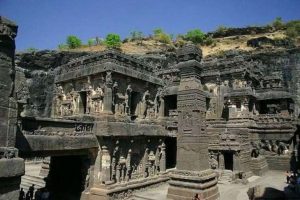One of the great lights of this world, one of the vanguards that first introduced Westerners to the wisdom teachings of Padmasambhava passed into mahaparinirvana last night. That man is Tulku Thondup Rinpoche, who asked those he met, his friends, and those close to him to just call him “Tulku” like one would call a friend Jane or Joe. Tulku in the Tibetan refers to the nirmanakaya or body form of Buddha. Through his wisdom being, his evenness, his devotion, his unceasing kindness, his delightful sense of humor, and his joyful simplicity he truly appeared—at least to those who were blessed by his wakefulness—to be The Buddha of Cambridge, Massachusetts, where he lived since his arrival as a Harvard visiting scholar in 1980.
(Samuel Bercholz, 29 December 2023)
I did not have the blessing of knowing Tulku Thondup Rinpoche, but so many of my close sangha, colleagues, and teachers knew him very well. I too feel his passing as a great loss, as well as a blessing—as accompanies a sacred transition—and a reminder of all I have received from my teachers and my lineage. Reading about people’s experiences with their teachers is a great inspiration, whether those practitioners are alive now as my peers, or are my spiritual ancestors whose namtar (Tib. revelatory biographies) I read or hear. These inspire and connect me to the precious lineage of Guru Rinpoche and Yeshe Tsogyal, and all the other saints and mahasiddhas and teachers of our time, of past generations, and of timeless time.
In particular, the way I was taught in Vajrayana Buddhism was specifically reliant on the sacred texts that were lovingly and carefully carried out of Tibet during the Cultural Revolution—a polite way of saying the genocide and erasure of Tibetan language, culture, and religion. Because of this exodus, exile, and escape, I and countless others greatly benefited from access and instruction based on these sacred texts. So I hold them most dear and often refer to them and use them in my own Dharma instruction to clarify points or to inspire new practitioners. Even still, in this crazy world fraught with charlatans and worse, the authentic unbroken lineages of the Buddhadharma pervade. It is our sacred duty to uphold them, propagate them, and share and practice them so that they do not fade but flourish.

Tulku Thondup Rinpoche taught, like many revered teachers, about the significance and meaning of the seven-line prayer and the Vajra Guru mantra. Both are the most essential, condensed prayer/practices that a Vajrayana practitioner can do—compact and efficient, yet bursting with blessings. They are fundamental to daily practice as well as preliminary practices, yet remain the foundation for lifelong practice. As Tulku Thondup Rinpoche said:
The Vajra Seven-Line Prayer is the most sacred and important prayer in the Nyingma tradition. This short prayer contains the outer, inner, and innermost teachings of the esoteric trainings of Buddhism. By practicing The Vajra Seven-Line Prayer according to any one of these trainings, the result of that particular training will be attained.*
I feel sadness and longing when yet another great master passes into parinirvana, demonstrating the end of this particular incarnation. I remember when after I received the phone call my most precious root grew left his body. I remember exactly where I was standing, what the weather was, who was in the room, and the sensation of my heart stopping in my chest, then dropping to the ground and laying there like a cold stone, though my body was motionless. Time stopped. At the same time, my heart rose through my mind and up into space, wide open. The experience of losing one’s beloved teacher in their corporeal form is beyond words and recognizable feelings. It is truly unbearable in a very expansive and unfathomable way. The experience is inescapable and produces a new landscape in which to relate to the teacher that is both universal and so deeply intimate at the same time.

In a personal letter to translator Heidi Nevin, Tulku Rinpoche gave heart advice on guru yoga which she has kindly shared, as follows:
You must get into the habit—the ingrained habit—of seeing and enjoying (by visualizing and feeling) Guru Rinpoche’s presence. See Guru Rinpoche’s powerful face, see his most kind and powerful eyes looking at you with all-knowing wisdom, unconditional love, and boundless power. I know that you have done and you are doing lots of prayers and meditations, but you still have to get into the simple but powerful habit of seeing his loving and powerful face and eyes during the daytime, and get into the habit of enjoying them deeply. When that happens then you can use that habit of seeing and enjoying his body of light and the light of love and power in the night time too. As soon as you feel Guru Rinpoche’s love and power in your heart, your whole mind and every particle of your body will become the light of love and confidence of Guru Rinpoche. If your heart is open to Guru Rinpoche, his love, wisdom, and power will be in you. Stay in that unity. Get into the habit of falling asleep in that unity. Saying the [vajra guru] mantra-just keep enjoying his loving presence filled with warmth, peace, and joy-again and again forever day and night. Then there will only be the light of peace and joy—the Buddha blessings.**

I do this practice at night, and then will sometimes dream of my heart lama, which is a great blessing, very joyous. Over many decades, I have come to understand there is nothing more fulfilling than guru yoga, whether visualized as Guru Rinpoche, Yeshe Tsogyal, or my own heart lama. There is simply nothing more to search for, no higher or more sublime practice.
Tulku Thondup Rinpoche and Lama Tharchin Rinpoche were two of the foremost students of the incomparable Dudjom Rinpoche and both upheld his gentleness, trust, purity of heart, and clarity of lineage teachings through perfect motivation throughout their lifetimes. Both were infinitely kind and loving toward their students and steadfast in upholding the Nyingma lineage with scholarship and devotion. They knew one another as friends and would meet to discuss writings and projects, with a special rapport.
May we meet again and again in the perfect mandala, time, and place.
* The Meaning Of The Vajra Seven Line Prayer To Guru Rinpoche (Dudjom Tersar Ngondro Program)
** Courtesy of Heidi Nevin, Facebook, 30 December 2023.
See more
The Passing of Tulku Thondup Rinpoche (The Chronicles of Chögyam Trungpa Rinpoche)
Vajrayana Foundation
Tulku Thondup Rinpoche
Related features from BDG
The Lotus-Born One
Dancing to Enlightenment: Drukpa Nuns Bring New Energy to the Songs of Realization
Book Review: How We Live Is How We Die by Pema Chödrön
Devotion as Trust in the Student-Teacher Relationship – A View into Guru Yoga, Part Three
A Journey Through the Guru’s Name Mantra
Who is the Guru? Accessing Inner Wisdom When the Teacher Has Passed
Related news reports from BDG
The Revered Buddhist Scholar and Teacher Tulku Thondup Rinpoche Has Died













